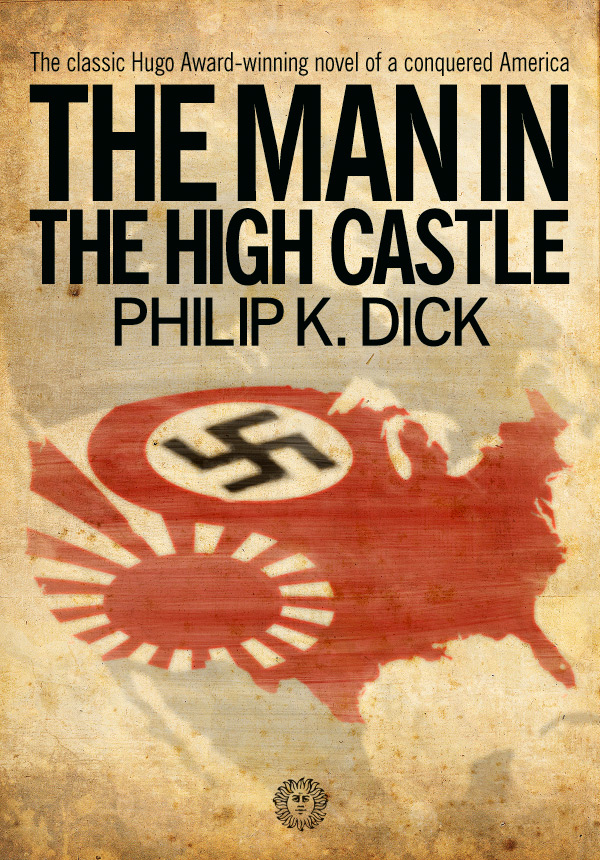Imagine a world where the Axis powers triumphed in World War II, reshaping the global landscape in ways that alternate history can only hint at. This is the tantalizing premise of Philip K. Dick’s masterwork, *The Man in the High Castle*. But what if we dared to ponder: what does this intricate narrative reveal about our understanding of reality, culture, and moral ambiguity? In contemplating this question, we embark on an exploration that extends beyond mere storytelling into the essence of human nature itself.
Set in an alternate 1962, this novel engulfs readers in a dystopian America where the United States is divided between the Nazi Reich and Imperial Japan. The West Coast falls under Japanese control, while the East is dominated by the Nazis, creating a grim tableau that serves as a backdrop for the myriad tales interwoven throughout the text. As we delve deeper into the novel’s layers, we find ourselves confronted by philosophical quandaries and ethical dilemmas that resonate with both historical context and contemporary discourse.
At its core, *The Man in the High Castle* challenges our perceptions of history and its interpretation through the lens of culture. The well-known fictional artifact, the book within the book titled *The Grasshopper Lies Heavy*, portrays a version of history where the Allies triumphed in WWII. It serves not only as a narrative device but also as a commentary on the nature of reality itself. One might ask, is history a fixed narrative cast in stone, or is it a malleable construct influenced by the perspectives of its chroniclers?
This pivotal question invites readers to grapple with the idea that history is often rewritten to fit the desires and ideologies of those in power. Dick’s narrative dynamically illustrates this phenomenon through the interplay of diverse characters—all struggling to affirm their identities within this fractured world. The protagonist, Frank Frink, embarks on a personal journey of self-discovery that parallels the broader search for autonomy amid totalitarian rule. His artisanal endeavors in forging unique pieces of jewelry symbolize a rebellion against the conformity imposed by oppressive regimes.
However, can art truly thrive in a landscape ravaged by tyranny? This leads us to another layer of existential contemplation: the role of art and creativity amidst oppression. Dick delves into this intrinsic struggle, suggesting that even in dire circumstances, individuals possess an innate desire to create, question, and innovate. Yet, the omnipresent specter of censorship and cultural hegemony looms large, leaving us to ponder whether genuine creativity can emerge from a society devoid of freedom—an inquiry that echoes through the corridors of our own historical landscape.
Moreover, one cannot ignore the intricacies of identity as explored through the character of Juliana Frink. Raised in an oppressive world, her quest to discover the author of *The Grasshopper Lies Heavy* leads her to a deeper understanding of herself and the societal constructs around her. It raises an intricate question: how much of our identity is shaped by the culture we inhabit, as opposed to our intrinsic self? This dichotomy reflects Dick’s keen observations of the human condition, suggesting that our essence often intertwines with the narratives we embrace—or reject.
Another fascinating aspect of *The Man in the High Castle* is its exploration of the concept of parallel realities. In Dick’s universe, alternate outcomes exist concurrently, challenging the notion of a singular path. This invites readers to consider the implications of choices made in both personal and broader societal contexts. What if pivotal moments had been treated differently? The subtle layers of this narrative not only amplify the potential for infinite realities but also reflect on the fragility of our own choices.
As the narrative unfolds, the omnipresent tension between reality and illusion leads us to examine profound themes of power and subjugation. The stoic figures of the Nazi party and the Imperial Japanese elite underscore the eerie intersections of ideology and human behavior. Dick does not shy away from showcasing the banal cruelty that often accompanies authoritarian rule, prompting a critical reflection on our contemporary societies grappling with similar forces.
What resonates powerfully through Dick’s work is the notion that reality is never as simple as it seems. The intersecting lives of characters create a rich tapestry, each thread contributing to the narrative’s overarching complexities. As we delve into their struggles, readers become more attuned to how reality itself is often fractured and layered, urging us to embrace uncertainty as we navigate modern existence.
In conclusion, *The Man in the High Castle* transcends mere speculative fiction, evolving into a profound exploration of identity, culture, and the malleability of history. It imbues the narrative with philosophy, conjuring questions about reality, creativity, and the essence of human nature. As we traverse this alternate history crafted by Dick, we cannot help but reflect on our own societal landscapes—challenging ourselves to confront the cultural narratives we accept, and those we choose to resist. Ultimately, in the grand tapestry of existence, it is the questions we ask that lead us closer to understanding the mysteries of our reality.
